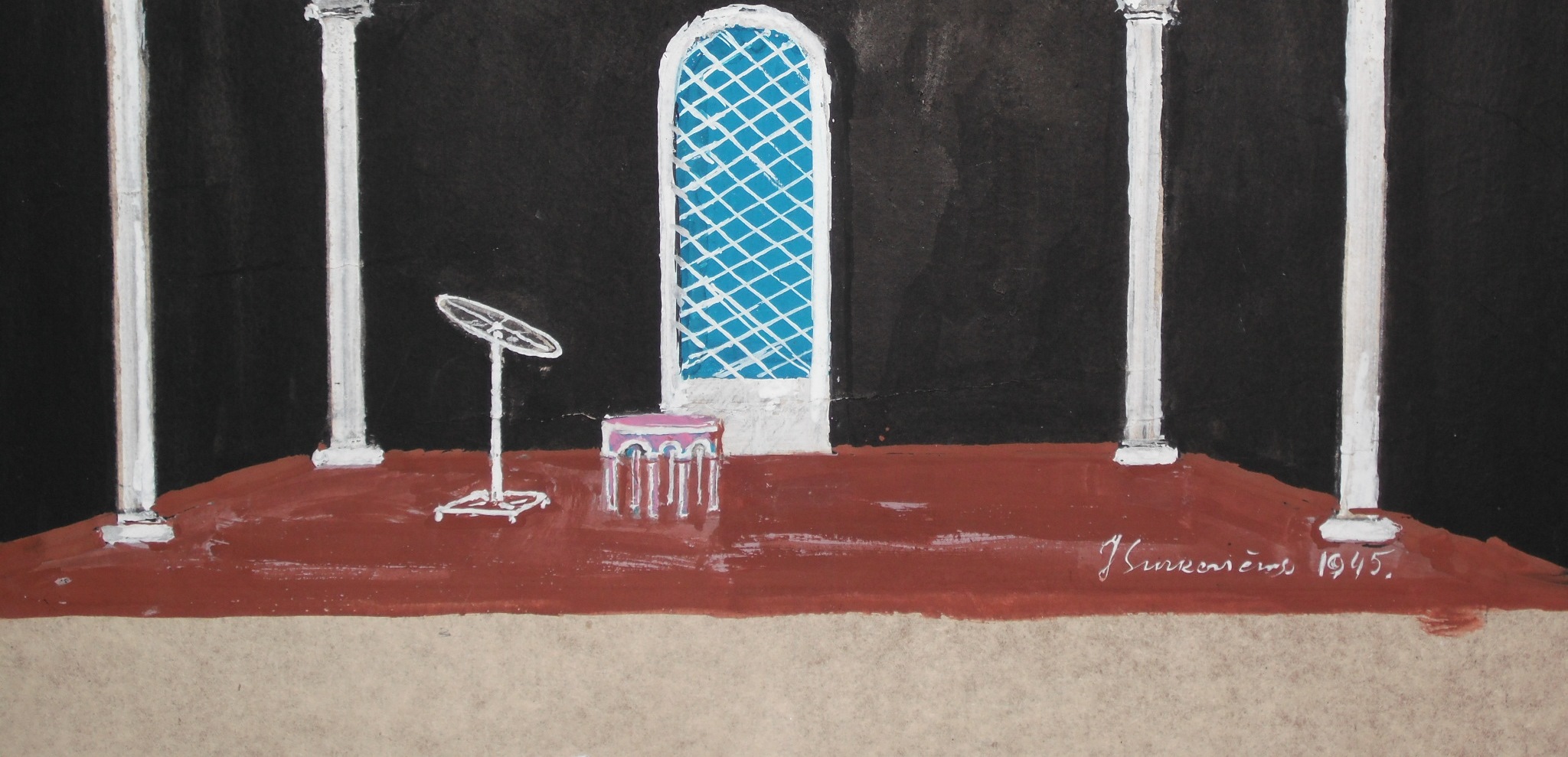The concept of scenography was first used by the Greek philosopher and researcher Aristotle in the fourth century A.D., in his work Poetics. The term was revived in the early 20th century by the English director, artist and actor Edward Gordon Craig. Scenography (from the Greek word skēnographia – to write something in a space) is also referred to as theatre design (or stage art, scenic design in English) – is the art of creating stage imagery: the stage space, decorations, scenery, costumes, makeup, lighting design and implementation. Recently, the term "dekoracija" (decoration) in Lithuanian has been replaced with a more native equivalent term, "scenovaizdis" (scenery, sets).
The development of scenography is closely linked to changes in dramaturgy, directing, acting and visual art trends and styles, as well as with technological advancements and the locations in which productions are performed. Scenography is usually created by one or a group of theatre artists, including visual artists (sculptors, painters, graphic artists), video or computer graphics designers, lighting designers, stage engineers, costume designers and makeup artists. Various spaces are employed in the creation of theatre design (the theatre stage itself, as well as public spaces such as factories, religious buildings, streets) and different ways and means of expression are used (objects, visual materials, computerized imagery and lighting, film clips, painting, sculpture, and various combinations thereof). Scenography is often categorized by the methods applied in its creation: architectural, sculptural (spatial), and painting (illustrative).
Scenography includes not only all objects visible during a production (tangible objects, images projected on a screen or other flat surfaces, lighting, costumes) or those present on stage, but also those items related to the production's concept, meaning, subtext and evocations. It is closely related to design, applied art, architecture, the visual arts and book illustration because it is created on the basis of a text and it is often planned and constructed as an aesthetic object. More precisely, it combines all forms of art and becomes part of the production itself. To create scenography is to write—or create—something in a theatrical space. This may be understood to mean the creation of a narrative through imagery that "speaks" and works together with—and sometimes in place of—the actor. While a production may exist without stage design, much is lost in its absence. Without it, a production loses the ability to deploy a first impression that can astound, captivate or even deceive audiences. Stage design expresses the elements of a production that cannot be described in words or movements. It is a fluid image that surrounds the actor, quietly working with him and with the stage space. It is an active participant in the production – at times the protagonist, at others, a supporting character.
There is also another side to stage design. It can reveal the creative individuality of the professional theatre artist: his or her ability to harmonize with a collective idea and introduce a new and contemporary understanding of a given dramatic work.
Lithuanian theatrical design experienced many upheavals, changes and challenges in the 20th century until it finally became a visual expression of the officially free and unrestricted creative ideas of stage designers.




Comments
Write a comment